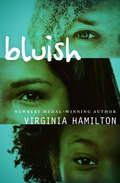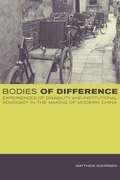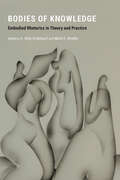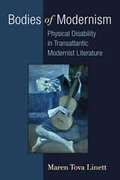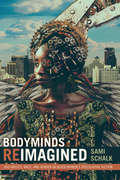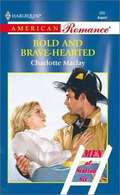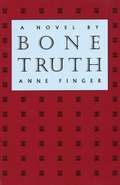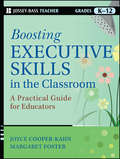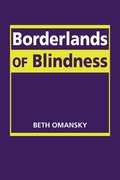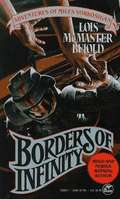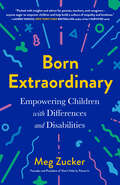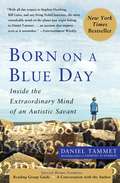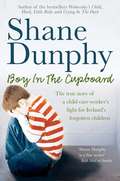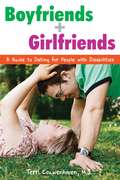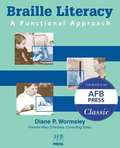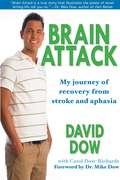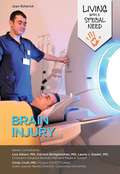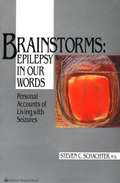- Table View
- List View
Bluish
by Virginia HamiltonAll of the kids at school stay away from &“Bluish,&” but when Dreenie and Tuli learn to see beyond her differences, they discover a true friend Ten-year-old Natalie is different from the other kids at her New York City magnet school: She is often absent, wears a knit cap, and uses a wheelchair. Her classmates have nicknamed her &“Bluish&” because her pale skin is tinted blue from chemotherapy. Dreenie is fascinated by and a bit frightened of Bluish—she watches her from afar and writes about her in her journal. As the school year progresses, Dreenie and her friend Tuli learn to see beyond Bluish&’s differences and discover a fiercely independent, spirited girl who isn&’t so different from them after all. But it&’s not easy being friends with someone who&’s sick, and Dreenie doesn&’t always know how to act. Hamilton delivers a lesson of compassion and demonstrates the power of friendship to overcome even the most trying of situations.
Bodies of Difference: Experiences of Disability and Institutional Advocacy in the Making of Modern China
by Matthew KohrmanBodies of Difference chronicles the compelling story of disability's emergence as an area of significant sociopolitical activity in contemporary China. Keenly attentive to how bodies are embedded in discourse, history, and personal exigency, Matthew Kohrman details ways that disability became a fount for the production of institutions and identities across the Chinese landscape during the final decades of the twentieth century. He looks closely at the creation of the China Disabled Persons' Federation and the lives of numerous individuals, among them Deng Pufang, son of China's Communist leader Deng Xiaoping.
Bodies of Knowledge: Embodied Rhetorics in Theory and Practice
by Marie E. Moeller A. Abby KnoblauchBodies of Knowledge challenges homogenizing (mis)understandings of knowledge construction and provides a complex discussion of what happens when we do not attend to embodied rhetorical theories and practices. Because language is always a reflection of culture, to attempt to erase language and knowledge practices that reflect minoritized and historically excluded cultural experiences obscures the legitimacy of such experiences both within and outside the academy. The pieces in Bodies of Knowledge draw explicit attention to the impact of the body on text, the impact of the body in text, the impact of the body as text, and the impact of the body upon textual production. The contributors investigate embodied rhetorics through the lenses of race and ethnicity, gender and sexuality, disability and pain, technologies and ecologies, clothing and performance, and scent, silence, and touch. In doing so, they challenge the (false) notion that academic knowledge—that is, “real” knowledge—is disembodied and therefore presumed white, middle class, cis-het, able-bodied, and male. This collection lays bare how myriad bodies invent, construct, deliver, and experience the processes of knowledge building. Experts in the field of writing studies provide the necessary theoretical frameworks to better understand productive (and unproductive) uses of embodied rhetorics within the academy and in the larger social realm. To help meet the theoretical and pedagogical needs of the discipline, Bodies of Knowledge addresses embodied rhetorics and embodied writing more broadly though a rich, varied, and intersectional approach. These authors address larger questions around embodiment while considering the various impacts of the body on theories and practices of rhetoric and composition. Contributors: Scot Barnett, Margaret Booker, Katherine Bridgman, Sara DiCaglio, Kristie S. Fleckenstein, Vyshali Manivannan, Temptaous Mckoy, Julie Myatt, Julie Nelson, Ruth Osorio, Kate Pantelides, Caleb Pendygraft, Nadya Pittendrigh, Kellie Sharp-Hoskins, Anthony Stagliano, Megan Strom
Bodies of Modernism: Physical Disability in Transatlantic Modernist Literature
by Maren LinettBodies of Modernism brings a new and exciting analytical lens to modernist literature, that of critical disability studies. The book offers new readings of canonical and noncanonical writers from both sides of the Atlantic including Flannery O'Connor, Eudora Welty, H. G. Wells, D. H. Lawrence, Elizabeth Bowen, Henry Green, Olive Moore, Carson McCullers, Tennessee Williams, J. M. Synge, Florence Barclay, Virginia Woolf, and James Joyce. Through readings of this wide range of texts and with chapters focusing on mobility impairments, deafness, blindness, and deformity, the study reveals both modernism's skepticism about and dependence on fantasies of whole, "normal" bodies.
Bodyminds Reimagined: (Dis)ability, Race, and Gender in Black Women's Speculative Fiction
by Sami SchalkIn Bodyminds Reimagined Sami Schalk traces how black women's speculative fiction complicates the understanding of bodyminds—the intertwinement of the mental and the physical—in the context of race, gender, and (dis)ability. Bridging black feminist theory with disability studies, Schalk demonstrates that this genre's political potential lies in the authors' creation of bodyminds that transcend reality's limitations. She reads (dis)ability in neo-slave narratives by Octavia Butler (Kindred) and Phyllis Alesia Perry (Stigmata) not only as representing the literal injuries suffered under slavery, but also as a metaphor for the legacy of racial violence. The fantasy worlds in works by N. K. Jemisin, Shawntelle Madison, and Nalo Hopkinson—where werewolves have obsessive-compulsive-disorder and blind demons can see magic—destabilize social categories and definitions of the human, calling into question the very nature of identity. In these texts, as well as in Butler’s Parable series, able-mindedness and able-bodiedness are socially constructed and upheld through racial and gendered norms. Outlining (dis)ability's centrality to speculative fiction, Schalk shows how these works open new social possibilities while changing conceptualizations of identity and oppression through nonrealist contexts.
Bold and Brave-Hearted
by Charlotte MaclayFIREMAN REPORT Name: Jay Tolliver Status: Relieved of duty to recover from injuries sustained in heroic rescue An earthquake had left celebrity Kimberly Lydell's once-flawless face permanently scarred. And though she withdrew from the world, Kim couldn't forget the strong, brave firefighter who'd risked his life to save hers. When she learned he'd been blinded in a fire, Kim flew to Jay Tolliver's side. Darkness temporarily held Jay prisoner. But he didn't need sight to know Kim was the woman he desired most in the world. Jay would accept her help - and show Kim that real heroes saw beauty with the heart.... Harlequin American Romance #886
Bone Truth
by Anne FingerElizabeth Etter, a freelance photographer who had polio as a child, discovers that she is pregnant. As she struggles toward a decision about whether or not to carry the pregnancy to term, she looks back on her own family history. Written by an author who is active in the disability-rights movement, this is not a novel about disability per se. But Elizabeth's disability is an integral part of her character and of her story as it unfolds.
Boo's Beard
by Rose ManneringTom can’t read facial expressions, so he doesn’t understand the other children and they don’t understand him. Playing at the park can be lonely sometimes, but luckily Tom has his dog, Boo, and Boo is easy to understand. She wags her tail when she is happy and whines when she is sad. One day, Boo gets her beard all knotted up in the bushes. A little girl named Lydia sees Boo and stops to talk to Tom. Boo’s beard has been tangled into a big smile, and Lydia explains to Tom that it’s the expression that someone makes when she is happy. She twists Boo’s beard into more expressions, explaining each one as she goes. When Lydia invites Tom and Boo to play on the swings with the kids, Tom and Boo join her. And at the end of the book, Tom understands the meaning of his own smile. This sweet book familiarizes children with social disabilities, such as autism and Asperger’s syndrome. Children learn the meaning of facial expressions and are introduced to the possibility that some children may have difficulty interacting with them.
Boogie Bass, Sign Language Star (After-School Superstars #4)
by Claudia MillsBoogie Bass feels like he can't do anything right, but when he joins an after-school American Sign Language club, he turns out to be a natural!The After-School Superstars--Nixie Ness, Vera Vance, Nolan Nada, and Boogie Bass--are back in a new after-school adventure starring Boogie. He is clumsy and goofy, but now that he is at the American Sign Language camp at his school, he finds his hidden talent. He may not believe in himself, but the rest of his class does, especially when they visit a school for the Deaf and Boogie leads the way with his exuberant personality helping students to learn about each other and make new friends. Vetted by an expert from Gallaudet University and complete with additional material full of facts about American Sign Language, Boogie Bass is an excellent addition to The After-School Superstar series. Each book features recurring characters and highlights one activity they do at their after-school program, along with illustrations in black and white. The series is perfect for fans of Judy Moody, Ivy and Bean, and Clementine. A Junior Library Guild Gold Standard Selection Praise for Nixie Ness: Cooking StarA Junior Library Guild Gold Standard Selection "Young readers will easily relate to this wholesome look at early friendships and conflicts."--School Library Journal "Likeable Nixie creates a terrific recipe for winning back old friends and making lots of new ones."--Kirkus Reviews Praise for Vera Vance: Comics StarA Junior Library Guild Gold Standard Selection"Vera's shyness will be appreciated and understood by many readers . . . and the lovely wrap-up shows how every personality type and situation can find a way to use their strengths to reach their goals."--Kirkus Reviews "Budding artists will appreciate the respect for and information about the comics process and relate to Vera's joy at immersing herself in her beloved pastime." --The Bulletin of the Center for Children's Books
Boosting Executive Skills in the Classroom
by Joyce Cooper-Kahn Margaret FosterA guide for helping students with weak Executive Function skills to learn efficiently and effectivelyStudents with weak Executive Function skills need strong support and specific strategies to help them learn in an efficient manner, demonstrate what they know, and manage the daily demands of school. This book shows teachers how to do exactly that, while also managing the ebb and flow of their broader classroom needs. From the author of the bestselling parenting book Late, Lost, and Unprepared, comes a compilation of the most practical tools and strategies, designed to be equally useful for children with EF problems as well as all other students in the general education classroom.Rooted in solid research and classroom-tested experience, the book is organized to help teachers negotiate the very fluid challenges they face every day; educators will find strategies that improve their classroom "flow" and reduce the stress of struggling to teach students with EF weaknesses.Includes proven strategies for teachers who must address the needs of students with Executive Function deficitsContains information from noted experts Joyce Cooper-Kahn, a child psychologist and Margaret Foster, an educator and learning specialist Offers ways to extend learning and support strategies beyond the classroomThe book's reproducible forms and handouts are available for free downloadThis important book offers teachers specific strategies to help students with EF deficits learn in an efficient manner, demonstrate what they know, and manage the daily demands of school.
Borderlands of Blindness (Disability in Society Series)
by Beth OmanskyBeth Omansky explores the lives of people with legal blindness to show how society responds to those who don't fit neatly into the disabled/nondisabled binary. Probing the experience of education, rehabilitation, and work, as well as the more intimate spheres of religion, family, and romantic relationships, her frank and theoretically sophisticated portrait of the legally blind experience offers an insight into our understanding of the social construction of disability.
Borderlines: A Memoir
by Caroline KrausPeople are constantly telling Caroline that the relationship she shares with Jane is a little on the odd side, but, Caroline doesn't want to admit it. After all, Jane is everything to her: friend, lover, even a surogate mother. They met in a Palo Alto bookstore. Caroline had moved west, after the death of her mother, intent on making a new and independent life for herself. Jane, however, had different ideas. As the women grow closer, Caroline discovers that Jane cuts herself with razor blades, sucks her thumb, and claims to have been sexually abused as a child. She finds herself becoming ever more wrapped up in Jane's problems, until her own sanity is threatened.
Borders of Infinity (Miles Vorkosigan Novellas)
by Lois Mcmaster BujoldAnthology containing Vorkosigan novellas, The Mountains of Mourning, Labyrinth, and Borders of Infinity.
Born Extraordinary: Empowering Children with Differences and Disabilities
by Meg ZuckerA parent&’s guide to empowering children to embrace their visible and invisible differences Meg Zucker was born with one finger on each hand, shortened forearms, and one toe on each misshapen foot, caused by a genetic condition called ectrodactyly. She would eventually pass this condition on to her two sons, and, along with her husband, raise them and their adopted daughter, who has her own invisible differences. Born of the family&’s hard-won experiences, this book offers invaluable advice on raising confident, empathetic, and resilient children who succeed, not despite but because of their differences. Born Extraordinary helps parents of children with differences and disabilities to relinquish their instinctive anxieties, embrace their new normal, and ultimately find joy in watching their children thrive. Often the subjects of unwanted attention—ranging from pitying stares to bullying—Zucker and her sons have learned to ignore what others think and live fearlessly. Also incorporating the stories of other families with visible and invisible differences of all kinds, Born Extraordinary gives parents the tools to meet their children&’s emotional needs while supporting the whole family unit. Parents learn how best to empower their children to confront others&’ assumptions, grow in confidence, and encourage dialogue—rather than silence, fear, and shame—around difference.
Born Twice
by Giuseppe PontiggiaWhen a breach birth leaves Paulo severely disabled, his father, the articulate, unsentimental Professor Frigerio, struggles to come to terms with his son's condition. Face to face with his own limitations, Frigerio confronts the strange way society around him handles Paolo's handicaps and observes his surprising gifts. In spare, deeply affecting episodes, the professor of language explores the nuanced boundaries between "normal" and "disabled" worlds. A remarkable memoir of fathering, winner of the 2001 Strega Prize, Italy's most prestigious literary honor ,Born Twice is noted Italian author Guiseppe Pontiggia's American debut. Sometimes meditative, often humorous, and always probing, Pontiggia's haunting characters linger and resound long after the book is done. From the Trade Paperback edition.
Born on a Blue Day: Inside the Extraordinary Mind of an Autistic Savant
by Daniel TammetBorn on a Blue Day is a journey into one of the most fascinating minds alive today -- guided by its owner himself. Daniel Tammet sees numbers as shapes, colors, and textures, and he can perform extraordinary calculations in his head. He can learn to speak new languages fluently, from scratch, in a week. In 2004, he memorized and recited more than 22,000 digits of pi, setting a record. He has savant syndrome, an extremely rare condition that gives him almost unimaginable mental powers, much like those portrayed by Dustin Hoffman in the film Rain Man. Daniel has a compulsive need for order and routine -- he eats the same precise amount of cereal for breakfast every morning and cannot leave the house without counting the number of items of clothing he's wearing. When he gets stressed or is unhappy, he closes his eyes and counts. But in one crucial way Daniel is not at all like the Rain Man: he is virtually unique among people who have severe autistic disorders in that he is capable of living a fully independent life. He has emerged from the "other side" of autism with the ability to function successfully -- he is even able to explain what is happening inside his head. Born on a Blue Day is a triumphant and uplifting story, starting from early childhood, when Daniel was incapable of making friends and prone to tantrums, to young adulthood, when he learned how to control himself and to live independently, fell in love, experienced a religious conversion to Christianity, and most recently, emerged as a celebrity. The world's leading neuroscientists have been studying Daniel's ability to solve complicated math problems in one fell swoop by seeing shapes rather than making step-by-step calculations. Here he explains how he does it, and how he is able to learn new languages so quickly, simply by absorbing their patterns. Fascinating and inspiring, Born on a Blue Day explores what it's like to be special and gives us an insight into what makes us all human -- our minds.
Bothered: Helping Teenagers Talk About Their Feelings
by Margot SunderlandAt this challenging developmental stage, when teenagers are finding things difficult, this book can really help. It is full of tools and techniques of what to say and how to be, enabling teenagers to move from unhappiness, poor functioning or learning blocks, to a place of self-awareness, self esteem and the ability to thrive. The first part of the book offers a key assessment tool, namely 'The Teenager Well-Being Profile'. This is designed for people to easily assess just how well the teenager is doing in their life emotionally and relationally. If the teenager is messing up in some areas, the Well-Being Profile will show clearly which life skill he or she has not yet mastered. The accompanying, empowering worksheets address key feelings, issues and concerns common to teenagers. The worksheets enable adults to be with the teenager in a confident, non-embarrassing and effective way so that the conversation flows. This book provides a real opportunity for transformational conversations that will really make a difference.
Boy in the Cupboard
by Shane DunphyPetru and Elvira Tomescu and their young son, Litovoi, are a Romanian family, desperate to start afresh in a new country. Yet their past has already caught up with them, and three-year-old Litovoi is about to pay a terrible price ...
Boyfriends and Girlfriends: A Guide to Dating for People with Disabilities
by Terri CouwenhovenEveryone knows that dipping your toe in the dating pond can be a little intimidating without first seeking some expert advice! And that's exactly what Terri Couwenhoven delivers in this book written expressly for teens and adults with intellectual or developmental disabilities. "Boyfriends & Girlfriends" explains the dos and don'ts of dating and validates their normal, age-appropriate desire for companionship and romance. The book covers the biggest questions and smallest concerns of every would-be dater, including: Who is an appropriate dating partner and who is not. How to read signals and judge whether the interest is mutual. How to ask someone out on a date. How to turn down a date. How to handle rejection. What sexual feelings are. How to work through problems in a relationship. What to do when a relationship is not working. Written and illustrated for a hi/lo reader, this book is perfect for anyone who is already in a relationship, ready to start one, or still only dreaming about it. The guide is also an informative read for parents, counsellors, and other support providers.
Braillables: A Manual for Parents and Teachers - Techniques for Teaching Drawing with Braille
by Marie PorterFrom the book: Braillables are pictures that are brailled by people who are able to braille them. They are outlines, sketches, sculptures, drawings, artwork. They are a creative expression that uses a necessary skill of blind people. They are fun to do, easily shared by sighted people, and they give an added dimension of freedom in using what can be a very rigid mode of communication. Blind people can draw in a medium over which they have complete control. Drawing with braille builds skill in reading, in interpreting charts, maps, diagrams, math and science figures. For those who pursue it, drawing with braille encourages imagination, creativity, a feeling for abstraction, perspective and proportion--all elements necessary for good concepts of objects, spatial relationships, and, ultimately, skill in orientation and mobility. Braille has an aura of mystery about it which isolates the reader. It can be austere, unpenetrable, a symbol of struggle and pain both for the blind person and for the family and friends. There is a coming together, a sharing, a breaking down of barriers when two heads bend over a picture of a dog and both the blind person and the sighted person see it as a dog. That is the fun of it.
Braille Literacy: A Functional Approach
by Diane P. WormsleyWormsley (program director, Professional Preparation Program in Education of Children with Visual and Multiple Disabilities, Pennsylvania College of Optometry) describes an approach to braille reading and writing instruction based on students' individual interests, needs, and goals. She offers general guidelines for a functional approach to braille literacy, then offers case studies of how the program can be modified for at-risk learners. The approach works with children and adults learning braille for the first time. B&w photos of instructional materials are included. Annotation ©2004 Book News, Inc., Portland, OR (booknews.com)
Brain Attack: My Journey of Recovery from Stroke and Aphasia
by David Dow Carol Dow-RichardsWhen David Dow was ten years old, his life suddenly changed due to a massive stroke. The stroke left him paralyzed on the right side and gave him aphasia, leaving him unable to speak, read, or write. Brain Attack shares David's story with frankness, humor, and most of all, with hope.
Brain Injury
by Joan EsherickThe human brain is a fragile organ, and as a result, brain damage is all too common. Tumors, strokes, accidents, gunshots, and impacts to the skull can all cause brain injury. These injuries can be minor--or they might cause memory loss or the inability to move normally. Many people who suffer brain injuries must relearn how to walk, talk, and do basic things like tie their shoes. In this book, you'll read the story of Jerome, a boy who suffered a dangerous head injury while riding his bicycle. You'll learn how schools, doctors, and others are helping people like Jerome regain control of their lives.
Brainstorms: Personal Accounts of Living with Seizures
by Steven C. SchachterThis fascinating book presents accounts of seizures and epilepsy written by adult patients in their own words. These personal, heartfelt passages realistically detail the feelings experienced before, during, and after a wide variety of seizures, and offer valuable insights to lay persons and professionals alike. Dr. Schachter first provides an overview of epilepsy and different seizure types from a medical perspective, and then presents a diverse collection of seizure descriptions written by patients. The book concludes with statements by some of these patients about what life with epilepsy is like, including the fear of having a seizure, the social and occupational problems encountered, and the psychological impact of the stigma still prevalent in our culture.
Branding and Designing Disability: Reconceptualising Disability Studies (Routledge Advances in Disability Studies)
by Elizabeth DePoy Stephen GilsonOver the past fifty years, design and branding have become omnipotent in the market and have made their way to other domains as well. Given their potential to divide humans into categories and label their worth and value, design and branding can wield immense but currently unharnessed powers of social change. Groups designed as devalued can be undesigned, redesigned and rebranded to seamlessly and equivalently participate in community, work and civic life. This innovative book argues that disability as a concept and category is created, reified, and segregated through current design and branding that begs for creative change. Transcending models of disability that locate it either as an embodied medical condition or as a socially constructed entity, this book challenges the very existence and usefulness of the category itself. Proposing and illustrating creative and responsible design, DePoy and Gilson include thinking and action strategies that are useful and potent for "undesigning", redesigning, and rebranding to meet the full range of human needs and to enhance full participation in local through global communities. Divided into two parts, the first section presents a critical examination of disability as a designed and branded phenomenon, exploring what exactly is being designed and branded and how. The second part investigates the redesign of disability and provides principles for redesign and rebranding illustrated with examples from high-tech to place-based sustainable strategies. The book provides a unique and contemporary framework for thinking about disability as well as providing relevant design and branding guidance to designers and engineers interested in embodiment issues.
